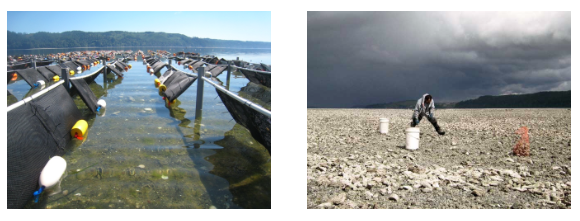|
A question we often get is: What’s the difference between a Blue Pool oyster and a Hama Hama? Both come from our friends at Hama Hama Oyster Co, from the exact same waters, in fact. So what’s the difference? Here’s the answer, straight from the Hama Hama’s mouth.  Blue Pool (left) and Hama Hama (right)
A: Growing method! Both oysters are grown on our home farm in Lilliwaup, and they’re both Pacific oysters (Crassostrea gigas). Their differences in flavor, shape, and seasonality are caused by HOW we grow them. Blue Pools grow suspended in “tumble bags,” which are bags that have buoys attached to them so that they move around with the tides and waves. Hama Hama oysters grow directly on the gravel beach, and have fluted, gnarled shells. Tumbling changes an oyster’s shape by breaking off the new growth, strengthening and smoothing the shell and causing it to form a deeper cup. What’s more, because the Blue Pools grow a few feet off the bottom, where there’s more current, they have a different (and more generous) diet than the beach grown Hama Hamas, giving them a different seasonality and flavor. They grow a bit faster, too, because they spend more time underwater feeding.  Blue Pools in the tumble farm (left) and Hama Hamas on the beach (right)
|
New ratings